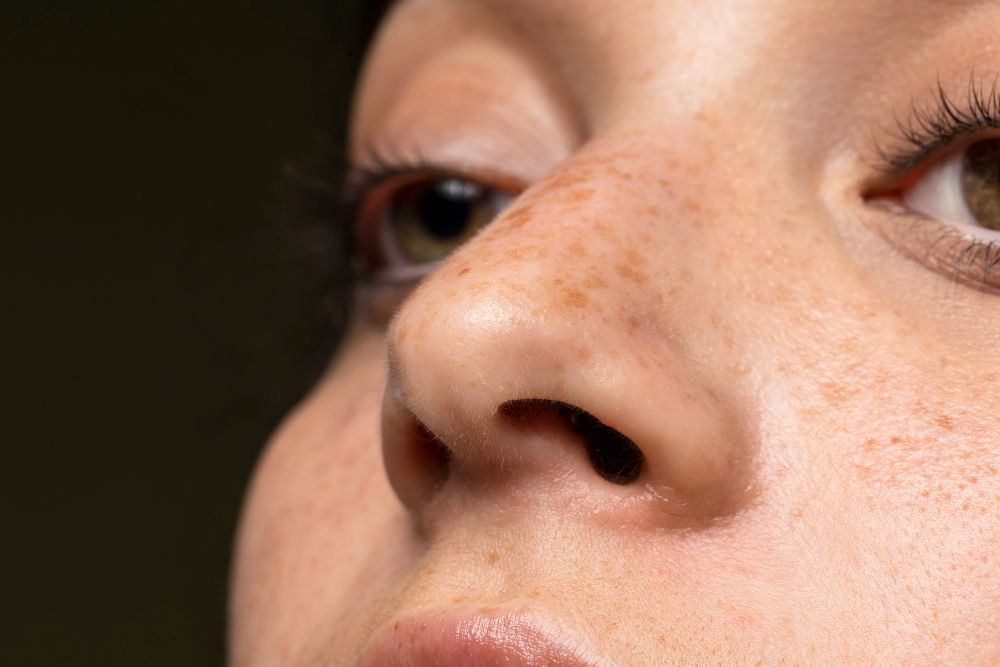Pigmentation is one of the most common skin concerns, but not all dark patches are the same. Melasma is often mistaken for general uneven skin tone, which can lead individuals down a frustrating path of self-diagnosis and ineffective over-the-counter treatments. This confusion delays proper care, causes unnecessary emotional stress, and often results in prolonged pigmentation that could have been managed more effectively with an accurate diagnosis and targeted dermatological treatment.
As dermatologists, we often see patients who’ve tried every cream or DIY remedy before realizing they were treating the wrong kind of pigmentation.
What Is Uneven Skin Tone?
“Uneven skin tone” is a broad, umbrella term. It usually refers to skin that looks patchy, dull, or has irregular pigmentation. It can be caused by:
- Sun exposure
- Acne marks (post-inflammatory hyperpigmentation)
- Dehydration or dryness
- Pollution
- Tanning or friction-related darkness (around the mouth, neck, etc.)
The good news? This is usually superficial and responds well to over-the-counter skincare, gentle exfoliation, and sunscreen.
What Is Melasma?

Melasma is an acquired skin condition characterized by symmetrical, brown to gray-brown patches, primarily on sun-exposed areas of the face such as the cheeks, forehead, nose, and upper lip. It predominantly affects women, especially those with skin types, and is often linked to hormonal changes.
Causes of Melasma
The exact cause of melasma remains multifactorial, involving:
- Sun Exposure: Ultraviolet (UV) radiation stimulates melanocytes, increasing melanin production.
- Hormonal Influences: Pregnancy, oral contraceptives, and hormone replacement therapy can trigger melasma.
- Genetic Predisposition: A family history of melasma increases susceptibility.
Why Melasma Needs More Than a Cosmetic Approach?
Melasma isn’t just a surface-level pigmentation issue—it reflects deeper pathological processes involving hormonal fluctuation and vascular changes. While it appears as a cosmetic concern, the root cause lies much deeper, making self-treatment with fairness creams or DIY hacks ineffective and, in some cases, even harmful.
What makes melasma particularly challenging is its chronic, relapsing nature. Even after periods of improvement, it can recur with sun exposure, hormonal shifts, or discontinuation of treatment. This highlights the importance of not just treatment but ongoing management under the guidance of a dermatologist.
Medical Treatments for Melasma
Treating melasma involves a layered, personalized approach guided by a dermatologist, depending on the depth of pigmentation. Some key medical treatments include:
- Topical Agents: Prescription-grade creams containing ingredients like hydroquinone, azelaic acid, kojic acid, tretinoin, and corticosteroids are often used in combination (commonly known as triple combination creams). These reduce melanin synthesis and accelerate skin turnover.
- Oral Medications: For resistant or hormonally driven melasma, oral tranexamic acid has shown promising results in reducing pigmentation by targeting vascular components and reducing melanocyte activity.
- Chemical Peels: Dermatologist-supervised peels can help exfoliate superficial pigment and improve skin tone
- Laser and Light Treatments: Devices like low-fluence Q-switched lasers, fractional lasers, or intense pulsed light (IPL) may be considered in select cases.
- Sun Protection and Maintenance: Broad-spectrum sunscreen with high UVA/UVB protection is the cornerstone of both treatment and prevention. Even indoor light exposure and heat can trigger melasma, so daily photoprotection is essential.
Conclusion:
While melasma and uneven skin tone both involve pigmentation concerns, understanding their distinct characteristics is vital for effective treatment. If you’re experiencing persistent or concerning skin discoloration, consulting with a dermatologist can provide clarity and guide you toward the most appropriate interventions.





